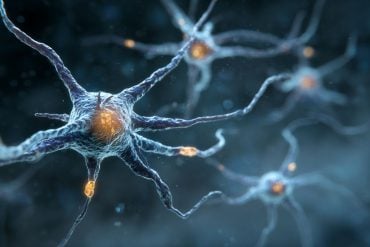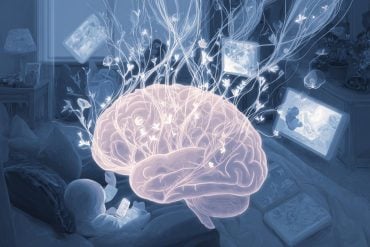Summary: A new preclinical study has found that two drugs—o-Vanillin and RG-7112—can clear “zombie cells” from spinal discs, potentially treating the root cause of chronic low back pain. These senescent cells accumulate with age or injury and cause inflammation, pain, and tissue damage.
When administered orally to mice, the drugs reduced inflammation, relieved pain, and even reversed disc damage, with the greatest benefits seen when both drugs were combined. This groundbreaking approach could transform treatment for millions with chronic back pain by targeting the source, not just the symptoms.
Key Facts:
- Root Cause Targeted: Zombie-like senescent cells drive inflammation in spinal discs.
- Dual Drug Effect: o-Vanillin and RG-7112 worked best when used together.
- Oral Success: Drugs delivered by mouth reached hard-to-access spinal discs and reversed damage.
Source: McGill University
In a preclinical study led by McGill University researchers, two drugs targeting “zombie cells” have been shown to treat the underlying cause of chronic low back pain. The condition affects millions of people worldwide.
Current treatments manage symptoms through painkillers or surgery, without addressing the root cause.
Credit: Neuroscience News
“Our findings are exciting because it suggests we might be able to treat back pain in a completely new way, by removing the cells driving the problem, not just masking the pain,” said senior author Lisbet Haglund, a Professor in McGill’s Department of Surgery and Co-director of the Orthopaedic Research Laboratory at the Montreal General Hospital (MUHC).
The work was conducted by McGill’s Alan Edwards Centre for Research on Pain at the Montreal General Hospital, part of the MUHC.
Treating pain at the source
Senescent cells, often called zombie cells, build up in the spinal discs as people age or when discs are damaged. Instead of dying off like normal cells, these aging cells linger and cause inflammation, pain and damage to the spine.
To explore a potential solution, the research team administered two drugs orally to mice: o-Vanillin, a natural compound, and RG-7112, an FDA-approved cancer drug. They were administered together as well as separately.
They found the drugs could clear zombie cells from the spine, reduce pain and inflammation, and slow or even reverse damage to spinal discs after eight weeks of treatment. Each of the drugs had a beneficial effect, but the impact was greatest when they were administered together.
“We were surprised that an oral treatment could reach the spinal discs, which are hard to access and present a major hurdle in treating back pain,” said Haglund. “The big question now is whether these drugs can have the same effect in humans.”
A natural compound’s surprising potential
Notably, o-Vanillin wasn’t originally intended to be part of the study and was included almost by chance. Haglund explained that while testing other drugs, her team decided to add the compound, derived from turmeric and known for its anti-inflammatory properties, to see whether it might be effective in this situation.
The results offer some of the first evidence that o-Vanillin can clear out zombie cells. Analogs of RG-7112 are known to do this in osteoarthritis and cancer research, but had not been used to treat back pain.

Looking ahead, Haglund’s team will work to improve o-Vanillin’s structure to help it stay in the body longer to become even more effective. They believe these drugs have the potential to treat other age-related diseases driven by senescent cells, such as arthritis or osteoporosis.
About the study
“Senolytic Treatment for Low Back Pain” by Matthew Mannarino, Hosni Cherif and Lisbet Haglund et al., was published in Science Advances.
Funding: The study was funded by the Canadian Institutes of Health Research, The Arthritis Society, Le Réseau de Recherche en Santé Buccodentaire et Osseuse and the Louise and Alan Edwards Foundation.
About this pain research news
Author: Keila DePape
Source: McGill University
Contact: Keila DePape – McGill University
Image: The image is credited to Neuroscience News
Original Research: Open access.
“Senolytic treatment for low back pain” by Lisbet Haglund et al. Science Advances
Abstract
Senolytic treatment for low back pain
Senescent cells (SnCs) accumulate because of aging and external cellular stress throughout the body. They adopt a senescence-associated secretory phenotype (SASP) and release inflammatory and degenerative factors that actively contribute to age-related diseases, such as low back pain (LBP).
The senolytics, o-vanillin and RG-7112, remove SnCs in human intervertebral discs (IVDs) and reduce SASP release, but it is unknown whether they can treat LBP. sparc−/− mice, with LBP, were treated orally with o-vanillin and RG-7112 as single or combination treatments.
Treatment reduced LBP and SASP factor release and removed SnCs from the IVD and spinal cord.
Treatment also lowered degeneration scores in the IVDs, improved vertebral bone quality, and reduced the expression of pain markers in the spinal cord.
Together, our data suggest RG-7112 and o-vanillin as potential disease-modifying drugs for LBP and other painful disorders linked to cell senescence.







